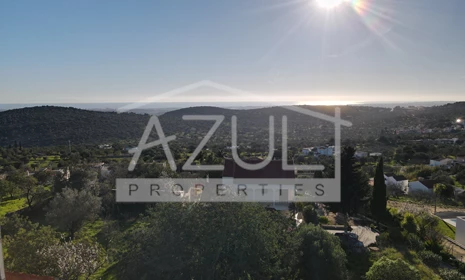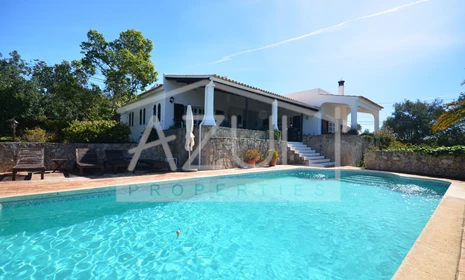
Solar panels for hot water
Introduction to solar panels
The Algarve is the perfect location to take advantage of the financial, practical and ecological benefits associated with solar panels. It is rare to have a day when the sun is not visible, so you can make the most of a solar system all year round.
There is often confusion about the types of solar panels available, and their functions. These can be broadly divided into two types-panels that produce electricity (photovoltaic) and those that produce hot water (thermal solar). This article will explain the principles behind the thermal systems that produce hot water. For an explanation of photovoltaic systems, please see our article here
Types of system
There are two main types of solar system that are used to genrate hot water, plus a third system that is not generally considered to be a true solar system.
Thermo-siphonic
The simplest system, which has no moving parts, pumps or control systems is a thermo siphonic system. This consists of a panel (or panels), a tank which is mounted above the panels, a pressure relief valve and little else. The system works on the basis of a scientific principle, that water rises as it heats up. The water (which is mixed with a chemical to increase thermal performance) within the panels heats up, rises and (in most cases) heats up an element within the tank that in turn heats the water.
These systems can be supplemented by an electric heater, which is used to heat the water when the sun is insufficient.
These systems are the cheapest option and require the least maintenance. They are not the most aesthetically pleasing (as the tank is visible on the roof) and do not allow monitoring and control of the hot water temperature.
It should be noted that the system described is an indirect system, whereby the water which is heated by the sun is not in direct contact with the water which is heated for the house. This ensures that calcium does not build up within the heating element. There are direct systems on the market that have a tank and storage incorporated within one panel, however due to the hardness of the water in the Algarve these are not recommended. These systems will suffer from calcium deposits which form on the heating element, which will reduce the efficiency of the system and lead to failures.
There are also systems on the market that use vacuum glass tubes (in place of panels) to heat the water. These are generally not recommended in the Algarve, as they over heat and need a system to "dump" the excess heat to prevent damage to the tank.
Forced system
This system is more complex than the basic thermo siphonic system. It consists of panels linked to a tank that is located away from the panels, a circulating pump and control system, safety valve, and supplemental electrical heater.
The operating principle of this system is based around a control system that monitors the temperature of the water stored in the tank, the temperature of the water heating up within the panels, and the difference between the two. Once the water in the panels reaches a temperature that is sufficiently higher than the water in the tank, the pump starts and pumps water into a heat exchanger in the tank, thus heating the water in the tank. As the water from the panels cools down the pump stops operating until the water in the panels heats up again. When correctly set up, the hot water is produced in optimum conditions and the system is very efficient.
Clearly a more complicated system such as this will be more expensive, both the equipment itself and the installation cost are more costly than a thermo-siphonic system. There are aesthetic benefits as the water tank is not visible, and does not have to be next to the panels, allowing you to choose the best location for the equipment.
Regular maintenance of a forced system is essential, as if there is an issue with the circulation system hot water will not be produced, and there are electronic components that have to be checked.
A solar system that isn't a solar system?
There is a system on the market that uses a small, black panel which does not have to be installed in direct sunlight but absorbs residual heat from the air. Instead of using treated water as a heating medium, a refrigerant is used, combined with a heat pump to create heat that subsequently heats the hot water for the house.
These systems rely on a small, efficient heat pump that creates heat using the refrigerant liquid. The heat pump has to run to heat the water, the system does not function without the pump operating. Whilst the heat pump is efficient, the gain from the solar absorbing panel is minimal.
These systems are useful when a solar panel can not be placed in direct sun, for aesthetic or practical reasons. However a simple heat pump based hot water system is often cheaper and equally efficient, and needs no panels.
When government grants have been available in Portugal these types of systems were not eligible for grants as they are not considered to be genuine solar systems.
Maintenance
We touched on the subject of maintenance, and whatever system you choose there will be some essential maintenance needed. These are some of the key points to consider.
There is a sacrifical anode within the water tank. This anode "attracts" corrosion and commits the equivalent of chemical suicide by sacrificing itself to protect the main heating element. Once the anode has worn away the man heating element will start to corrode, so it is important that this is replaced as necessary.
The heating medium (a mixture of water and a corrosion inhibiting chemical) should be checked and topped up or changed as necessary. Failure to do this will result in reduced performance of the system.
After long periods of dry, hot weather the solar panels will become dirty, and this reduces their effectiveness. A simple cleaning regime will ensure that you get the best out of your solar system.
Conclusion
Solar systems to produce hot water are an excellent investment, botn in fiscal terms and environmental terms, and we encourage all of our clients to consider these systems. Selection of the correct type and size of system will ensure that you get the best performance and return on your investment.

